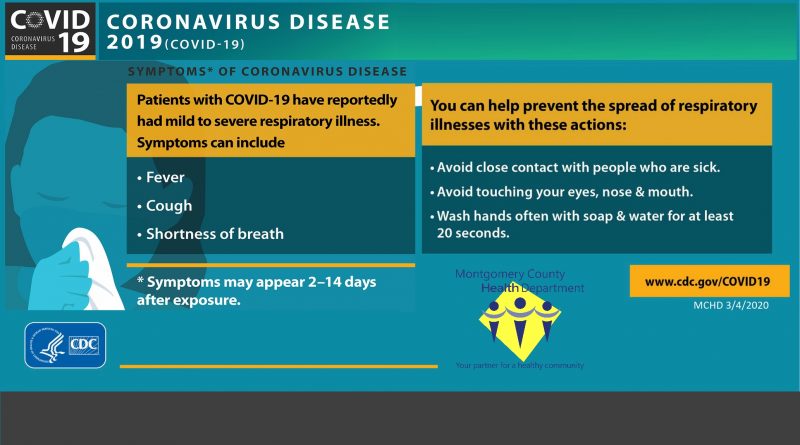Coronavirus Information
Navigating the Winter Surge: An Update on COVID-19 in the United States
A Recent Upsurge in COVID-19 Cases
The United States is experiencing a winter surge of COVID-19. As of early November 2023, there has been a notable increase in COVID-19 cases across the country. Biobot Analytics' wastewater analysis indicates a 12% rise in SARS-CoV-2 levels, signaling a significant uptick in infections.
Public Attitude Towards COVID-19 Vaccination
A recent survey highlighted a shift in public sentiment regarding COVID-19 vaccination. Approximately half of the adult population in the U.S. does not plan to receive the latest COVID-19 vaccine. Many individuals express a lack of concern about catching or transmitting the virus, indicating a possible complacency towards the pandemic.
COVID-19 Variants and Testing Trends
As the pandemic evolves, so do the variants of the virus. In Nebraska, for instance, COVID-19 testing in late October 2023 showed a 17% positivity rate, a 3.4% increase from the previous week. This rise is reflective of the broader trend of emerging COVID-19 variants and their impact on community transmission.
Current Hospitalization Rates
Despite the increase in cases, there is a silver lining. According to the Centers for Disease Control and Prevention (CDC), the United States is currently experiencing about one-quarter of the COVID-19 hospitalizations that it did in August 2022. This suggests that while cases are on the rise, the severity of the disease might be lessening, or healthcare strategies are effectively managing the impact.
Conclusion: Staying Vigilant
As we face another wave of COVID-19, staying informed and vigilant is crucial. The rise in cases, evolving public attitudes towards vaccination, and the dynamics of new variants call for continued caution and adaptation of strategies to manage the pandemic effectively. While the reduced rate of hospitalizations is encouraging, it's important not to become complacent and continue adhering to public health guidelines and vaccination recommendations.
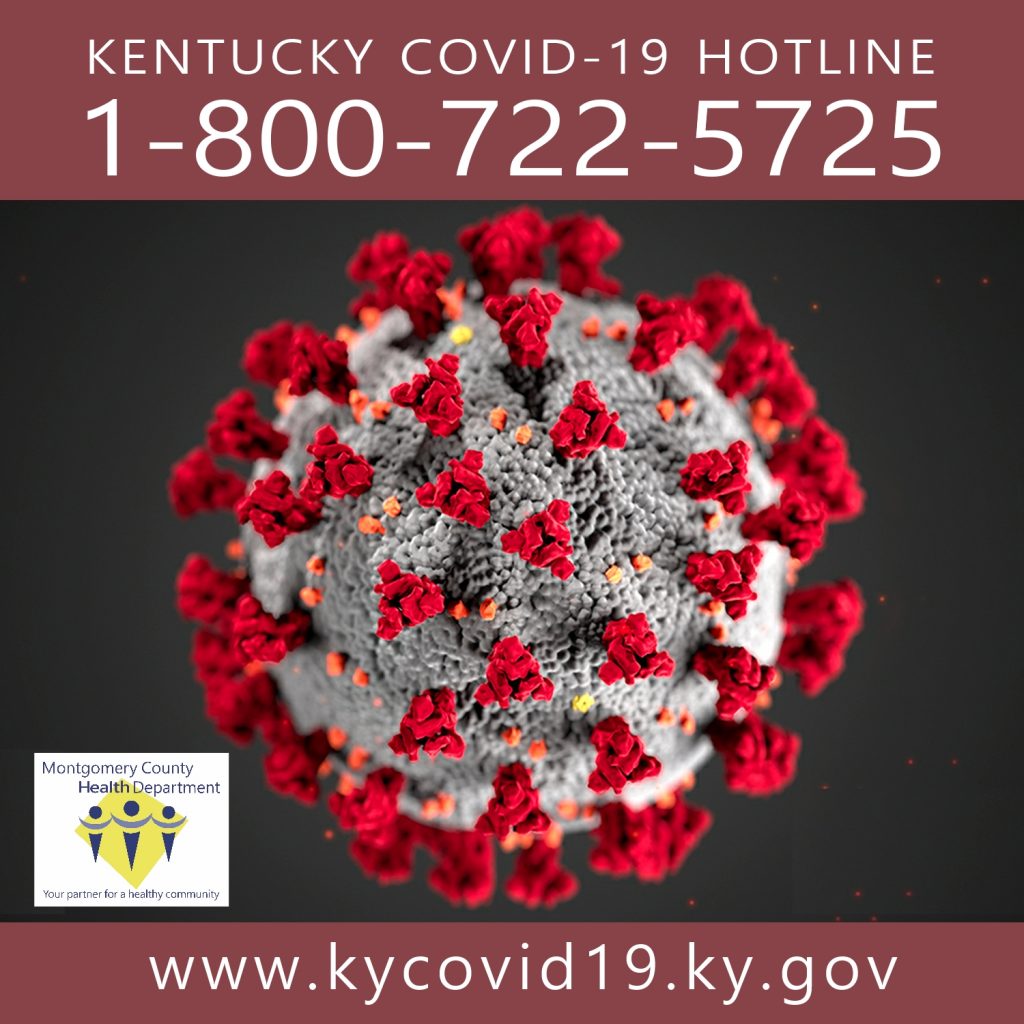

As of Tuesday, May 12 at 11 am, Montgomery County has had 16 confirmed cases of COVID-19. Six are active and 10 have recovered.
Montgomery County’s 16th COVID-19 Case Confirmed
May 12, 2020 11 AM – Montgomery County’s 16th case of COVID-19 to date was confirmed on Monday, May 11, 2020. This most recent case is linked to the county’s 15th case announced on May 11. Of the county’s total of 16 confirmed cases, six are active and 10 have recovered.
The latest resident to test positive for COVID-19 is following all guidelines for remaining in isolation at home. Everyone who was in close contact with the individual has been contacted to inform them they may have been exposed and to ask if they have experienced any symptoms. Additional details about the specific individual cannot be provided because of medical privacy laws.
The public is strongly advised to observe all social distancing guidelines and to practice standard public health prevention by washing hands frequently, containing coughs and sneezes, and staying home if ill. It is especially important to limit your exposure to the most vulnerable populations, including those 60 years old or older and/or those who may have diabetes, heart or lung disease, kidney failure, or other chronic major medical conditions. Please be sure to follow state guidance on when to seek care.
Free drive-through COVID-19 testing is now available. The first step to get tested is to call the Montgomery County Health Department at 859-497-2448 from 8 am-12 pm and 1-4:30 pm Monday-Friday. A nurse will ask you a few questions about your health.
You will then be given an appointment, along with specific instructions on location and time. Testing is available even if you don’t have symptoms.
Kentucky is reporting all cases of COVID-19 and is working to make all communities where cases reside aware. The Montgomery County Health Department is working closely with the Kentucky Department for Public Heath to monitor signs of illness in the community; assess patients; and keep the public safe and informed.
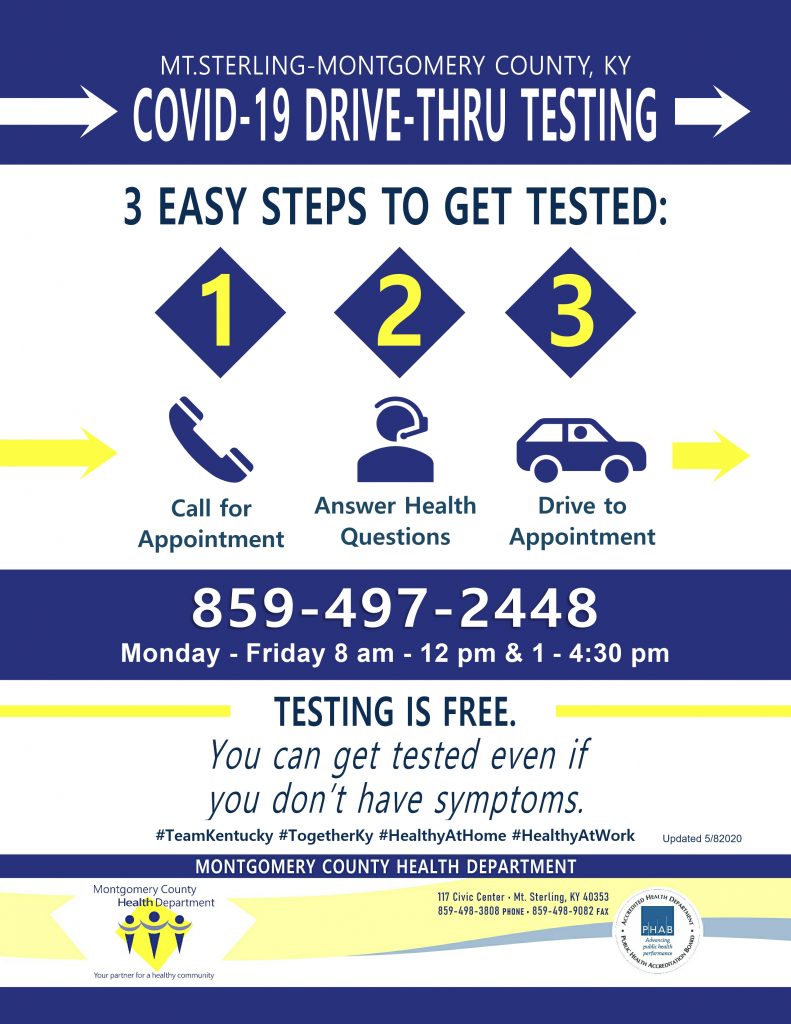
The Centers for Disease Control and Prevention (CDC) states this is an emerging, rapidly evolving situation in the United States. The CDC will provide updated information and guidance as it becomes available.
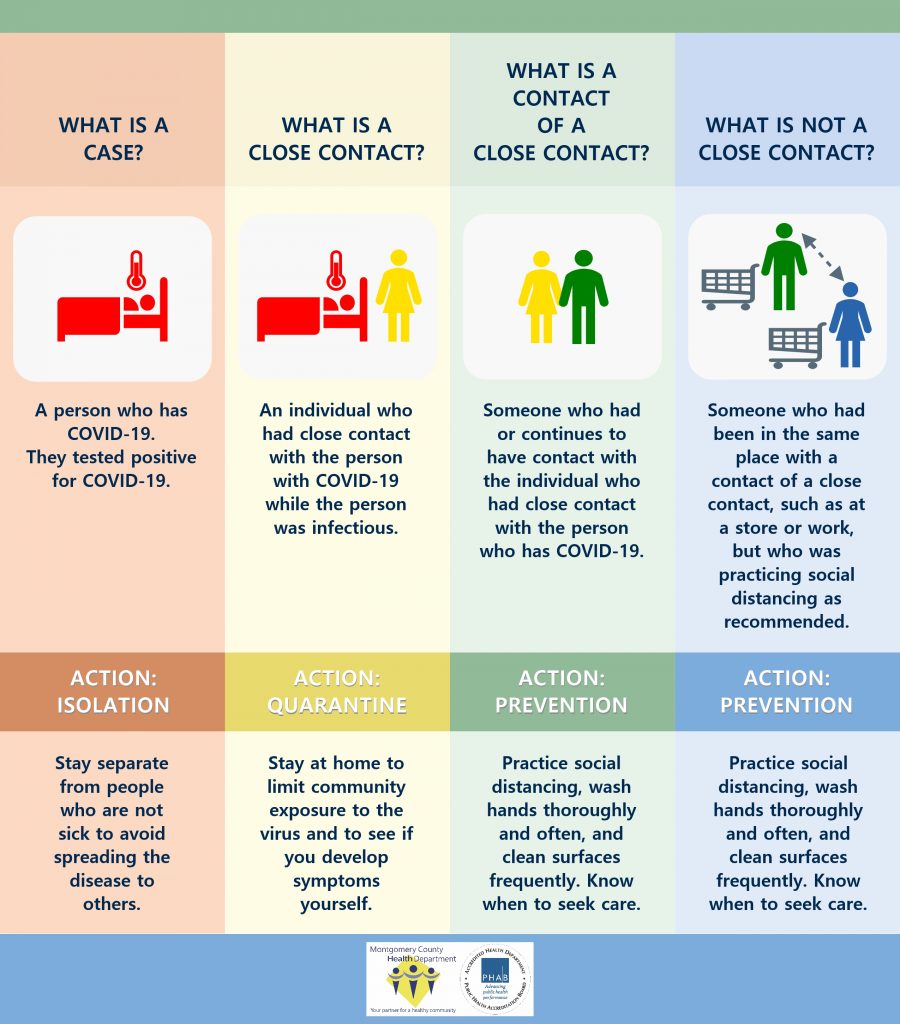
For Gov. Beshear’s 5/11 5 pm update, click here.
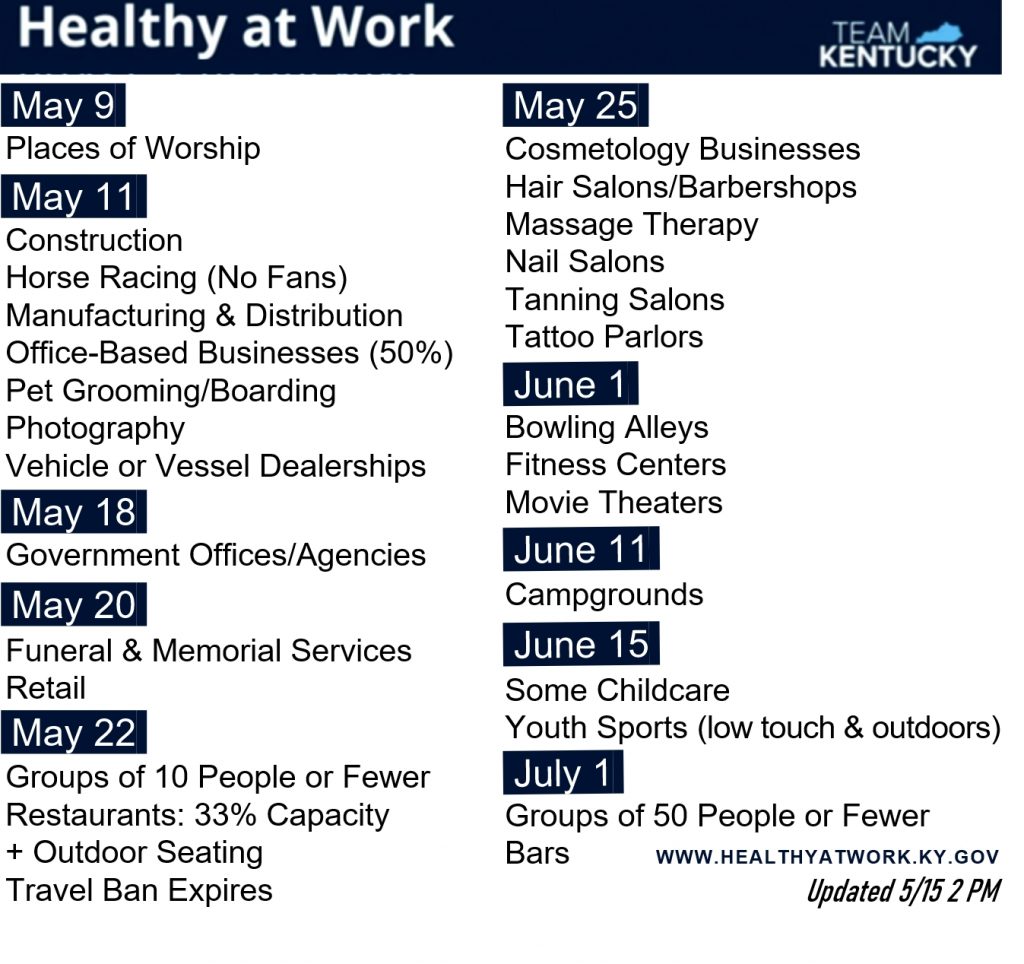
For an article that explains “Flattening the Curve” and how social distancing helps slow the spread of disease, click here.
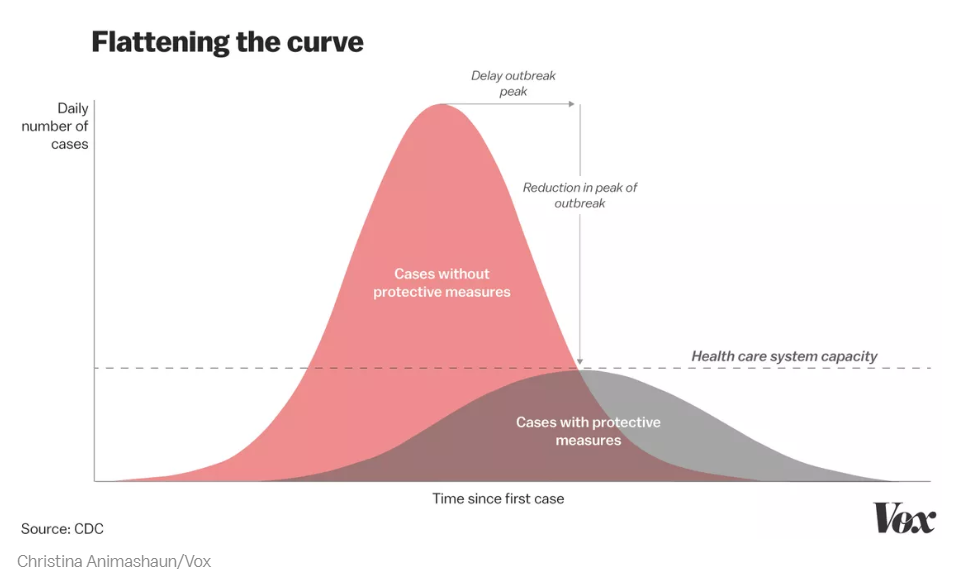
To watch the video message from the Kentucky Department for Public Health, click here.
What is Coronavirus?
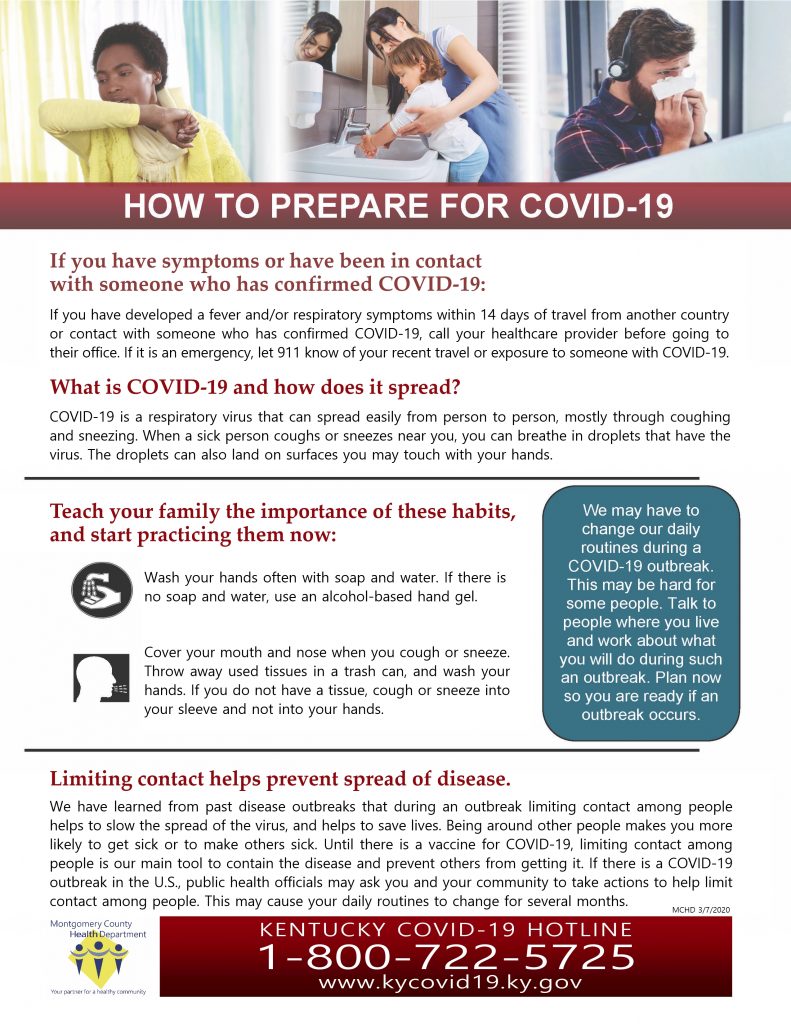
The disease caused by this new, or novel, coronavirus is named “coronavirus disease 2019”, which is abbreviated as “COVID-19”.
Media reports about cases of COVID-19 are referring to patients who have tested positive for this strain of coronavirus.
Reported illnesses have ranged from mild symptoms to severe illness and death for confirmed COVID-19 cases.
Symptoms may appear 2-14 days after exposure and include fever, cough and shortness of breath.
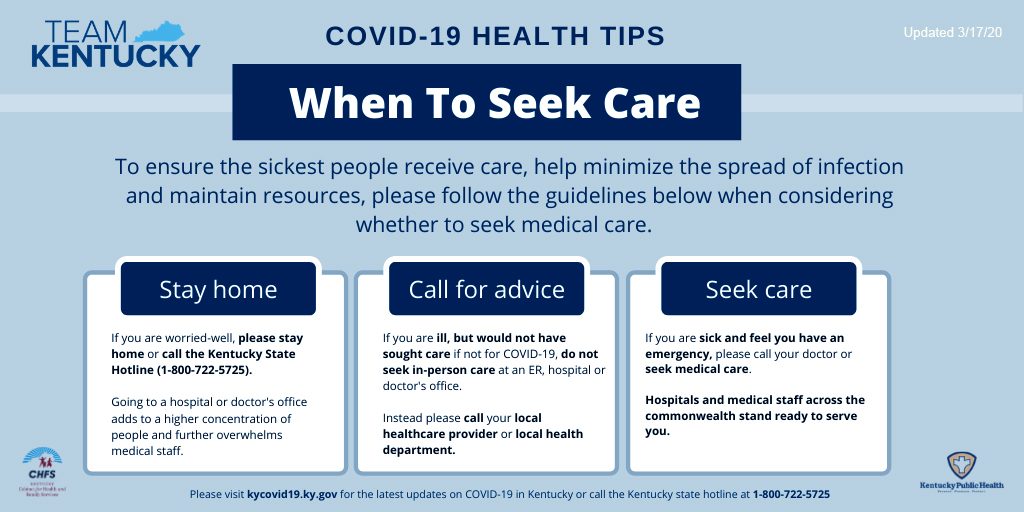
The Kentucky Department for Public Health has issued health tips for when to seek care. These include:
• Stay home – If you are worried, but well, please stay home. Going to a hospital or doctor’s office for information could overwhelm medical staff.
• Call for advice – If you are ill, but wouldn’t have sought care if not for worry about COVID-19, do not seek care at an ER, hospital or doctor’s office. If you want advice on whether your symptoms require a visit to a healthcare provider, call your local healthcare provider or the Kentucky state hotline.
• Seek care – If you are sick and feel you have a medical emergency, please call your doctor or seek medical care. Be sure to inform medical staff of your symptoms in advance.
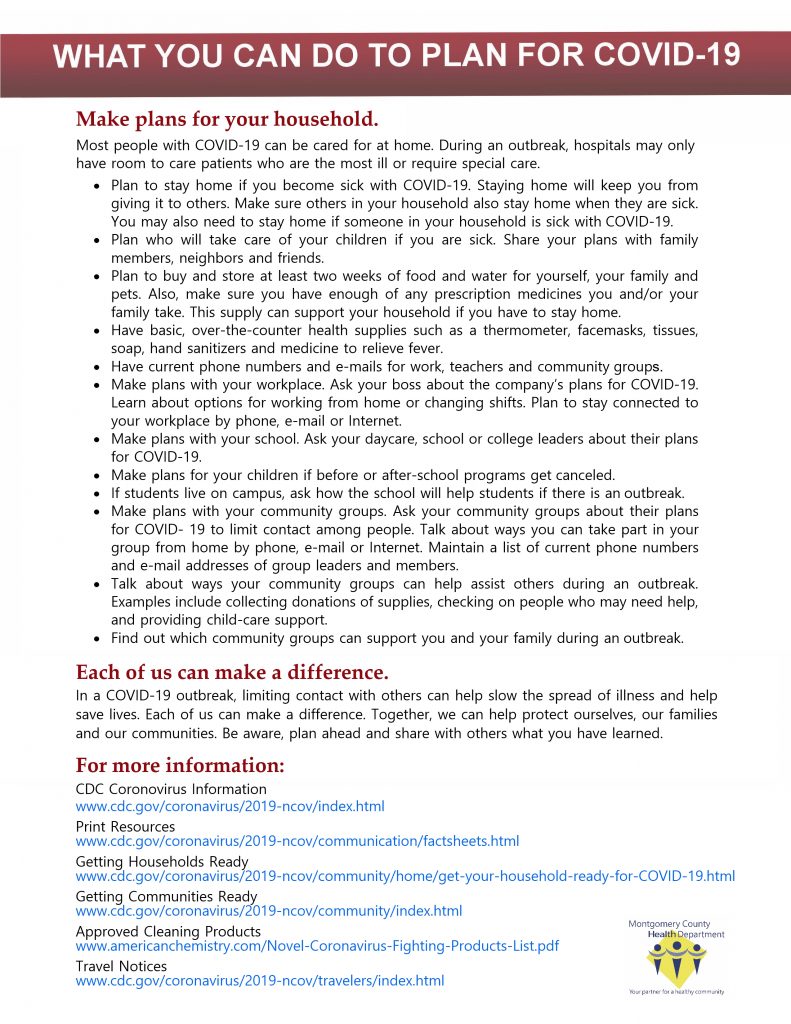
How to Be Prepared
The CDC provides regular guidance regarding travel. You can find this info at cdc.gov/travel.
CDC currently recommends that travelers avoid all nonessential travel to China. Other guidance for other countries is available on the website.
There is currently no vaccine to prevent COVID-19. The best way to prevent illness is to avoid being exposed to this virus and CDC recommends the same everyday preventive actions to help prevent the spread of respiratory diseases, including:
- Avoid close contact with people who are sick.
- Avoid touching your eyes, nose, and mouth.
- Stay home when you are sick.
- Cover your cough or sneeze with a tissue, then throw the tissue in the trash.
- Clean and disinfect frequently touched objects and surfaces using a regular household cleaning spray or wipe.
- Observe regular handwashing guidelines.
- Follow CDC recommendations for using a facemask.
The CDC does not recommend that people who are well wear a facemask to protect themselves from respiratory diseases, including COVID-19.
Facemasks should be used by people who show symptoms of COVID-19 to help prevent the spread of the disease to others.
The use of facemasks is also crucial for health workers and people who are taking care of someone in close settings (at home or in a health care facility).
Early information out of China, where COVID-19 first started, shows that some people are at higher risk of getting very sick from this illness. This includes:
• Older adults
• People who have serious chronic medical conditions like heart disease, diabetes and lung disease
If you are at higher risk for serious illness from COVID-19 because of your age or because you have a serious long-term health problem, it is extra important for you to take actions to reduce your risk of getting sick with the disease.
If you are at higher risk of getting very sick from COVID-19, you should:
• Stock up on supplies, including madications.
• Take everyday precautions to keep space between yourself and others.
• When you go out in public, keep away from others who are sick, limit close contact and wash your hands often.
• Avoid crowds as much as possible.
• Avoid cruise travel and non-essential air travel.
• During a COVID-19 outbreak in your community, stay home as much as possible to further reduce your risk of being exposed.
Local Reponse
The CDC advises that more cases of COVID-19 are likely to be identified in the coming days, including more cases in the United States. It’s also likely that person-to-person spread will continue to occur, including in the US.
The Montgomery County Health Department has been working with local healthcare providers to help ensure everyone is on alert for identification and isolation of any possible cases of COVID-19.
Also, they have issued information to local healthcare providers recommending they remind all staff of their facility’s respiratory protection program and Personnel Protective Equipment (PPE) policies.
The personal protective equipment recommended for COVID-19 is the same as those for droplet precautions which is: gloves, gown, face shield/goggles, and a N95 mask. This is not needed nor recommended by the CDC for the general population.
If a case is identified, following PPE policies is important to healthcare providers to keep from spreading the virus to others, and to keep those heath care professionals well and able to treat others.
Healthcare providers have also been given information about when and how to contact public health officials if a case of COVID-19 is suspected.
The Montgomery County Health Department will continue to keep you informed as updated information becomes available.
Because the flu is currently causing more complications than COVID-19 in our local area, Health Department officials remind you to get your flu shot and follow the guidelines listed for preventing the spread of respiratory disease, including washing your hands frequently.
For more information about COVID-19, visit the CDC website at: www.cdc.gov/covid-19.

